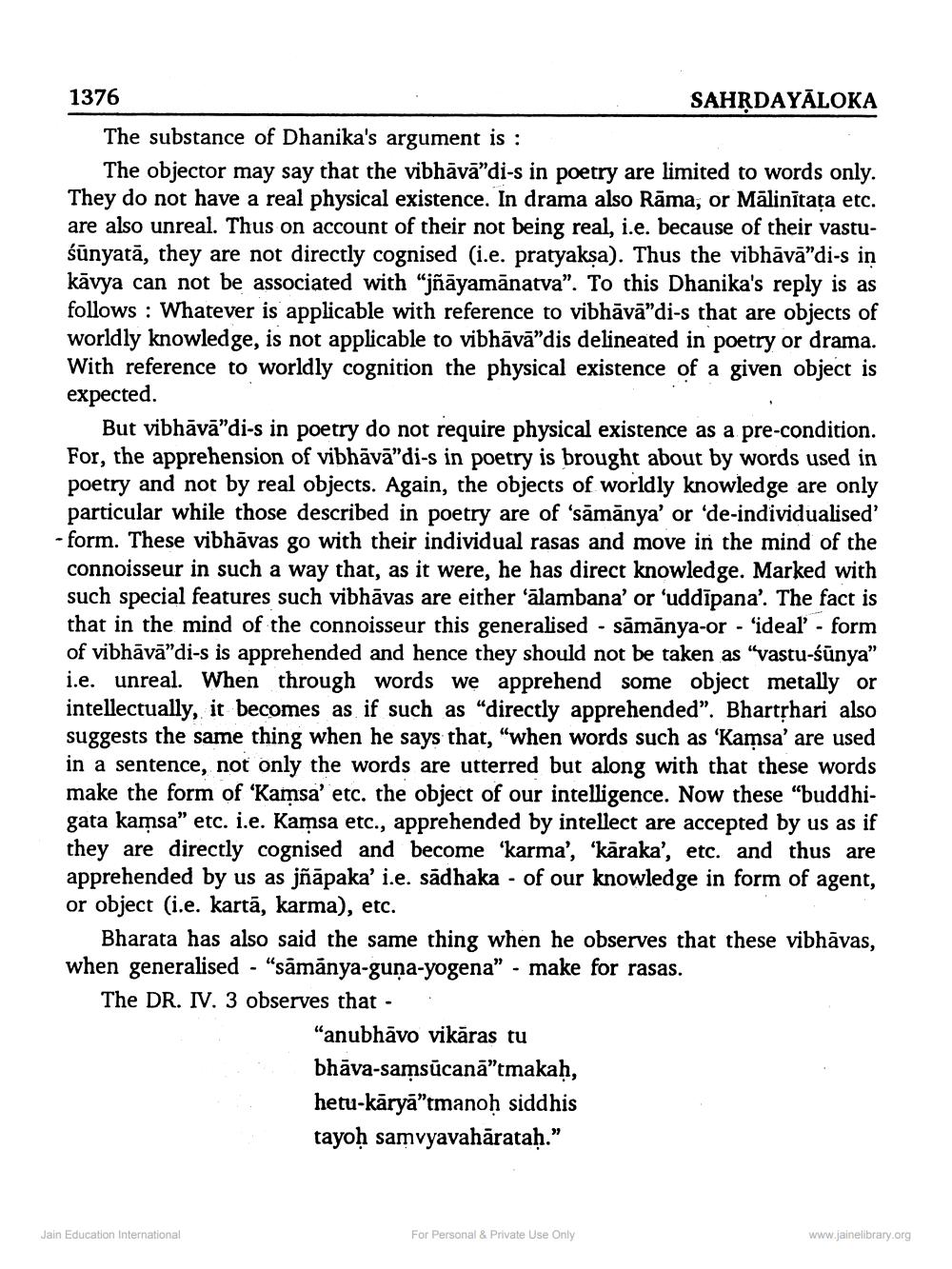________________
1376
The substance of Dhanika's argument is :
The objector may say that the vibhāvā”di-s in poetry are limited to words only. They do not have a real physical existence. In drama also Rāma, or Mālinītața etc. are also unreal. Thus on account of their not being real, i.e. because of their vastuśūnyata, they are not directly cognised (i.e. pratyakṣa). Thus the vibhāvā❞di-s in kavya can not be associated with "jñāyamānatva". To this Dhanika's reply is as follows: Whatever is applicable with reference to vibhāvā❞di-s that are objects of worldly knowledge, is not applicable to vibhāvā"dis delineated in poetry or drama. With reference to worldly cognition the physical existence of a given object is expected.
But vibhāvā❞di-s in poetry do not require physical existence as a pre-condition. For, the apprehension of vibhāvā"di-s in poetry is brought about by words used in poetry and not by real objects. Again, the objects of worldly knowledge are only particular while those described in poetry are of 'sāmānya' or 'de-individualised' - form. These vibhāvas go with their individual rasas and move in the mind of the connoisseur in such a way that, as it were, he has direct knowledge. Marked with such special features such vibhāvas are either 'alambana' or 'uddipana'. The fact is that in the mind of the connoisseur this generalised - samanya-or- 'ideal' - form of vibhāvā"di-s is apprehended and hence they should not be taken as "vastu-sunya" i.e. unreal. When through words we apprehend some object metally or intellectually, it becomes as if such as "directly apprehended". Bhartṛhari also suggests the same thing when he says that, "when words such as 'Kamsa' are used in a sentence, not only the words are utterred but along with that these words make the form of 'Kamsa' etc. the object of our intelligence. Now these "buddhigata kamsa" etc. i.e. Kamsa etc., apprehended by intellect are accepted by us as if they are directly cognised and become 'karma', 'kāraka', etc. and thus are apprehended by us as jñāpaka' i.e. sadhaka - of our knowledge in form of agent, or object (i.e. kartā, karma), etc.
Bharata has also said the same thing when he observes that these vibhāvas, when generalised - "sāmānya-guna-yogena" - make for rasas.
The DR. IV. 3 observes that -
Jain Education International
SAHṚDAYALOKA
"anubhavo vikāras tu bhāva-samsucana"tmakaḥ, hetu-kāryā"tmanoḥ siddhis
tayoḥ samvyavahārataḥ."
For Personal & Private Use Only
www.jainelibrary.org




